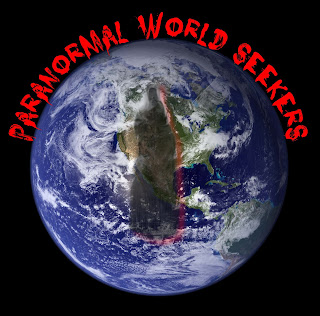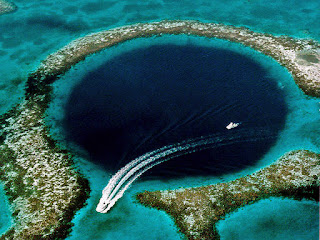Mermaids and even mermen, are legendary beings of the sea, the
upper part human, the lower half from the waist down, a fish’s tail. In the book, Arabian Nights, mermaids are described as having
"moon faces and hair like a woman's, but their hands and feet were in their
bellies and they had tails like fishes." Currently, a TV show on
Freeform, Siren, is a paranormal with
mermaids. Season One just finished. A movie that won the Academy Award for Best
Picture this year, The Shape of Water,
obviously inspired by a movie from the 50s, The Creature of the Black Lagoon (another merman), shows these beings of the
sea are not slowing down.
Creatures
half-human and half-fish in form have been in stories for thousands of years. The
Babylonian deity, Era or Oannes, the Fish-god is depicted as having a bearded
head with a crown and a body like a man, but from the waist downwards he has
the shape of a fish." Greek mythology contains stories of the god Triton,
the merman messenger of the sea. Several modern religions including Hinduism
and Candomble (an Afro-Brazilian belief) worship mermaid goddesses to this day. There
is the 1836 tale by Hans Christian Anderson, “The Little Mermaid, which became
a Disney movie and one of its princesses. You can read the original story HERE.
It is not sweet and lovely fairytale, but can be scary, most of all, she kills
herself.
Mermaids can
wander on land, as told in many tales. But they must be very careful not to
lose their fish tail while wandering about on land, because without it they
would be unable to return to their underwater realm. Same goes for selkies—only
it is their sealskin.
In folklore, mermaids became associated with misfortune and
death, luring errant sailors off course and even onto rocky shoals. This
happened in Greek myths, with the sirens. Some say it was their siren songs
that these creatures could lure the men in.
Mermen also have a
frightening reputation for summoning storms, sinking ships and drowning
sailors. Such as the Blue Men of the Minch, whom are said to dwell in the Outer
Hebrides off the coast of Scotland. They look like ordinary men (from the waist
up anyway) except for their blue-tinted skin and gray beards. Local lore claims
that before laying siege to a ship, the Blue Men will challenge its captain to
a rhyming contest. Now if the captain is quick enough of wit and agile enough
of tongue, he can outsmart the Blue Men and save his sailors from a watery
grave. Another merman-like male being is the sorcerous Finman. it
is said the Finwife began life as a mermaid. Their
myth comes from the Orkney Islands. The story goes that they are mistrusted by
mortals and have magic. That they have unparallel boating skills, as well
power over storm and sea. These beings are also noted shapeshifters. The
Finfolk were truly amphibious. The Finfolk led a nomadic lifestyle, but
spent long Orkney winters in the luxury of Finfolkaheem, a majestic city
of unknown location, supposed to be at the bottom of the sea. The
tales of storytellers tell that this fantastic undersea kingdom has massive
crystal halls and ornate gardens of multi-colored seaweed. Lit by the
phosphorescent glow of the sea, Finfolkaheem was decorated with swathes of
draped curtains whose colors shifted like the ever-changing shades of the
"Merry Dancers" - the Aurora Borealis. Towers of glistening white
coral spiraled upwards, encrusted with pearls and precious gemstones. The
kingdom was so rich that giant pearls were littered everywhere, often ground up
by the merfolk to provide the powder that was scattered over the mermaids'
tails to give them their sparkling sheen. In the waters surrounding
Finfolkaheem, the Finfolk raised sea-cattle and magical sea-horses. Like the
true gentry of their underwater world, they herded whales - from which they
extracted milk - and, mounted on their aquatic steeds, would often hunt the
animals of the sea using otters in place of dogs.
During summertime, the Finfolk returned to Orkney. It is there that they took up residence on their magical island home, Hildaland - one of Orkney's magical vanishing islands. it has been said that Hildaland was later taken from the Finfolk and renamed Eynhallow.
Two distinct of these kinds of fairy folk are within the ranks of the Finfolk - the Finman and the Finwife. Though tales of the Finmen make up most of the bulk of the folklore and are standard in their descriptions of the gloomy creatures.
Like fairies of the land on the Orkney Islands, they also steal away mortals. Once caught, they spirit away their captives and transport them to their hidden island homes. It in these places that the unfortunate mortals are forced to remain for the rest of their days, usually as wife or husband of one of the Finfolk. It is no doubt, how the people of Orkney Island explained drowning deaths.
Japanese legends
have a version of merfolk called kappa. Said to reside in Japanese lakes,
coasts and rivers, these child-size water spirits appear more animal than
human, with simian faces and tortoise shells on their backs. Like the Blue Men,
the kappa sometimes interacts with humans and challenge them to games of skill
in which the penalty for losing is death. Kappa are said to have an appetite
for children and those foolish enough to swim alone in remote places — but they
especially prize fresh cucumbers.
P.T. Barnum
displayed the Feejee Mermaid in the 1840s, becoming one of his
most popular attractions. People paid 50 cents, hoping to see a long-limbed,
fish-tailed beauty combing her hair. Instead, they saw a grotesque fake corpse
a few feet long, with the torso, head and limbs of a monkey and the bottom part
of a fish. To modern eyes it was an obvious fake, but it fooled and intrigued
many at the time.
Today, it is said manatees and even dugongs may have been the
animals mistaken for being mermaids and mermen. Dugongs are enormous vegetarians can be found
in warm coastal waters from East Africa to Australia, including the Red Sea,
Indian Ocean, and Pacific. Dugongs are related
to manatees and are similar in appearance and behavior— though the dugong's
tail is fluked like a whale's. There are three species of
manatee, distinguished primarily by where they live. The West Indian manatee
ranges along the North American east coast from Florida to Brazil. The
Amazonian manatee species inhabit the Amazon River and the African manatee swims
along the west coast and rivers of Africa. Manatees are large,
slow-moving animals that frequent coastal waters and rivers. These attributes
make them vulnerable to hunters seeking their hides, oil, and bones. Manatee
numbers declined throughout the last century, mostly because of hunting
pressure. Today, manatees are at-risk. Though protected by laws, they still
face threats. The gentle beasts are often accidentally hit by motorboats in
ever more crowded waters, and sometimes become entangled in fishing nets.
Both the dugong and the manatee are related to the
elephant, although the giant land animal is not at all similar in appearance or
behavior.
Whether real or not, Mermaids and mermen still fascinate
us from all the books, TV shows, movies,
and more that have and will continue to come out.






















